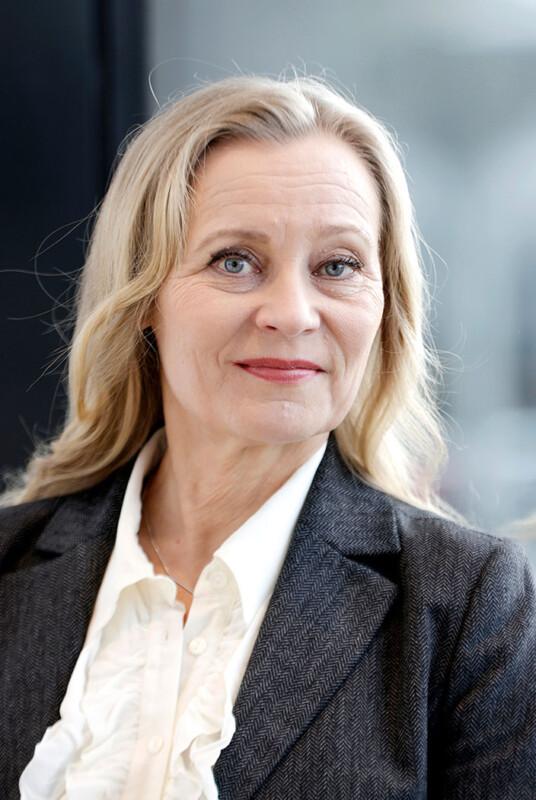
YTN has defended the interests of senior salaried employees for 50 years, and there is still a need for more work in the future.
 Collective agreements on the terms and conditions of employment relationships continue to be relevant, as there are no clauses in Finnish legislation that would obligate employers to increase salaries. The legislation also does not recognise, for example, holiday pay or paid family leave.
Collective agreements on the terms and conditions of employment relationships continue to be relevant, as there are no clauses in Finnish legislation that would obligate employers to increase salaries. The legislation also does not recognise, for example, holiday pay or paid family leave.
“The general increase defined in collective agreements has been an important part of salary formation for senior salaried employees. Ultimately, it ensures that all our members have a positive salary development if the company is not able to agree on raises locally,” says Teemu Hankamäki, Negotiations Manager, former Chairman and current Vice-Chairman of YTN.
THE FAILURE OF THE LABOUR MARKET MODEL WAS A PITY, AS A NEED FOR IT EXISTS
Throughout the 21st century, the labour market has been more or less in a state of transition. The main reason is the reluctance of employers to engage in centralised collective bargaining.
First, there was a shift from comprehensive incomes policy agreements to union-specific agreements, and nowadays, for example, the employers’ association Metsäteollisuus ry no longer concludes national agreements but considers company-specific agreements to be the only viable option. Petteri Orpo’s government programme also reflects a strong desire to increase local agreement.
“Many of those who talk about local bargaining may not understand its nature. The basis of an agreement is that there are two parties with a common interest and the willingness to come to a mutual understanding. A unilateral decision to increase local bargaining goes against this principle. Local bargaining is a good tool, but not a silver bullet. Some people think that increasing local bargaining will immediately improve the situation in Finland,” Hankamäki says.
In order to increase stability and predictability, labour market organisations and the government tried to outline a new type of labour market model on a tripartite basis, but the discussions broke down on 13 December. The “Finnish model” following the comprehensive incomes policy agreements period was based on the export industry agreement also determining the salary level of other sectors.
“The failure of the model was unfortunate. YTN believes that a common labour market model based on agreement and negotiation would be useful for Finland. Arguing doesn’t usually move things forward, and it would be best for all parties to not seek solutions through threatening industrial action.”
A CHANGING ENVIRONMENT REQUIRES THE ABILITY TO ADAPT ONE’S OWN ACTIONS
Persistent labour market turbulence requires adaptability and agility from actors, and it seems that there will be an increasing need for these qualities in the future.
“Our strategic objectives state that YTN is an effective contracting party in all situations and is able to flexibly change its way of working, if necessary. Over the past few years, the balancing between national and local agreements has significantly changed the operating environment,” says Hankamäki.
In sectors where there is no national collective agreement or where the collective agreement is not generally binding, YTN must be able to reach a company-specific agreement. One example of the change is the IT services sector, whose generally binding collective agreement expired a few years ago.
“The sector has a collective agreement, but it is not binding on unorganised companies. Quite a few companies went down the path of company-specific agreements, and now there are about twenty collective agreements between different companies. An understanding has been reached on the terms and conditions of agreements and salary increases, as the sector is strong and has a high demand for skilled labour. In another sector, the situation could be different.”
EMPLOYEE REPRESENTATIVES OFTEN ACT AS WATCHDOGS
The benefits of collective agreements for senior salaried employees are also reflected in statistical data on salary development.
“According to the latest YTN-data survey, the majority of respondents in sectors with a collective agreement say that their salaries have increased compared to sectors without a collective agreement,” says researcher Tuunia Keränen.
agreement say that their salaries have increased compared to sectors without a collective agreement,” says researcher Tuunia Keränen.
YTN-data is an annual survey that maps YTN members’ labour market status, attitudes towards work and working methods. According to Keränen, one clearly visible pattern is the increase in telecommuting, which was accelerated by the coronavirus pandemic.
“In 2021, more than half of the respondents said that they work remotely at least 3–4 days a week. Only one in ten respondents said that they do not work remotely at all.”
Telecommuting also creates new kinds of challenges for local lobbying, as shop stewards do not physically encounter the employees they represent, and, in addition, many companies have several different sites. On the other hand, the labour market outlook and the increasing prevalence of company-specific collective agreements suggest that there is an increasing need for employee representatives, and their training will require additional efforts from YTN.
“The number of collective agreements is increasing, which is why we should prepare for this future vision in several collective agreement sectors. As a result, the role of employee representatives will change: instead of interpreting the national agreement, the emphasis is on one’s personal negotiation skills. There is a need to increase the understanding of how collective agreements can be reached, how the company works, the financial conditions required for salaries to be increased, and so on,” says Hankamäki.
YTN PREPARES COLLECTIVE AGREEMENTS, AKAVA TAKES CARE OF PUBLIC AFFAIRS
YTN was originally founded because senior salaried employees in the private sector felt that the central organisation Akava was too focused on the public sector.
“Today, the division of roles between YTN and Akava is quite clear, as the role of central organisations has decreased and they no longer determine the price of labour. We negotiate collective agreements and maintain a network of employee representatives, while Akava exerts legislative influence on behalf of member unions and, for example, carries out lobbying activities related to the pension system,” Teemu Hankamäki says.

“In the turmoil of the world and the labour market, close cooperation is needed to develop working life. In my opinion, one of the best examples of effective cooperation between a central organisation and a negotiation organisation is the family leave reform,” says Maria Löfgren, Chairman of Akava.
A central organisation can also support a negotiation organisation by producing information. Akava uses the Incomes Register to keep track of the monthly salary development indicators of all employees as well as those with a higher education degree. In addition, AkavaWorks will start publishing a cost-competitiveness indicator based on the Bank of Finland’s method and the European Commission’s statistics and economic forecasts.
“Comparative data can be used to support collective bargaining or to describe the financial value of Akava members’ work in the labour market,” Löfgren says.
From the point of view of a negotiation organisation, what are Akava unions’ most important common goals now and in the future? Hankamäki lists three things.
“Defending percentage-based salary increases and the reduction of income taxation, as well as better financial incentives for training and education.”
Akava and YTN fought for the family leave reform
In August 2022, a family leave reform that increased gender equality entered into force. It extended family leave and, in particular, increased the number of fathers’ daily allowance days, as the parental allowance quotas were divided equally between both parents.
After the reform, YTN started to promote similar equality changes to collective agreements, which typically state that, for example, the mother is entitled to three months of paid parental leave while the father is only entitled to one week of paid parental leave. Since parental allowance is not comparable to a salary, families often decide that the mother should stay at home to take care of the child for financial reasons. A significant breakthrough was made in the collective agreement of senior salaried employees in the technology industry in February 2023.
Akava was pushing for a legislative reform, while YTN worked on collective agreements and negotiations.
“The full societal impact of the reform was achieved through YTN making family leave one of the top goals of its collective bargaining,” says Maria Löfgren, Chairman of Akava.
After the technology industry collective agreement, family leave was also included in other collective agreements concluded by YTN. Depending on the agreement, both parents of the child are entitled to 28–36 days of paid leave. In addition, the parent giving birth is entitled to 40 days of paid pregnancy leave. Previously, the parent who did not give birth was only entitled to five days of paid leave.
The basis of the legislative reform was gender neutrality, which is also reflected in new collective agreements. The old family leave system was built on the assumption of a nuclear family with a father and a mother.
“In the reform, it was important for Akava to enable a wide range of families to have an equal distribution of parental leave and to take into account the diversity of families,” Löfgren says.
Text: Mikko Nikula
